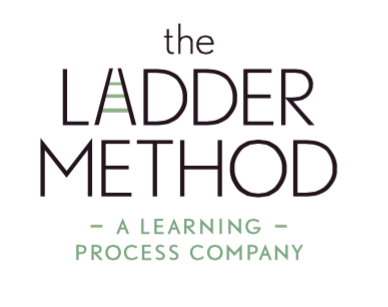Navigating the Transition from Elementary School
photo via dolgachov
Returning to school is an important moment for any child. For students transitioning from elementary to middle school or from middle to high school, this time can be even more significant and anxiety-producing. This next chapter can be a big step forward in terms of workload and responsibility. What can you as parents do to help your child thrive during this important transition?
Buy the Right Items!
“Back-to-school shopping” is not just an opportunity that allows department stores to generate more revenue. It is a tremendously important opportunity to set your child up for a successful academic year. Our team here at The Ladder Method has created a nifty shopping list to ensure your trip to the office supply store is constructive.
All of these items are meant to help your child better organize their time. In middle and high school, students’ focus is pulled in more directions than they have ever been pulled. Sports practices become more rigorous and demanding, their social circle expands, and their homework becomes more difficult. For these reasons, we recommend a Daily Planner. Cultivating the ability to organize and manage their time is the most important skill they can learn during this transition as it is a skill that will continuously benefit them throughout life.
Learn Self Care:
In addition to managing their time and schedules, it is beneficial your student learns how to manage their minds. You don’t need us to tell you how developmentally important this age is for your child. You’ve seen it as they’ve grown up before your eyes. As their minds develop, they are more susceptible to stress and anxiety-particularly during this vulnerable transition time. Anxiety amongst teenagers is higher than ever before. The National Institute of Health estimates that 1 in 3 teens will experience an anxiety disorder between the ages of 13-18. According to studies, this is due to unattainable expectations and unhealthy comparisons via social media. Social media has been shown to have undesirable effects on their self-esteem. For some tips on combating the negative impact of social media, check out our article.
This transitional period is a great time to introduce the importance of self-care and mindfulness to your child. Mindfulness meditation has been shown to mitigate the cognitive symptoms that mark depression and students who meditated before tests showed remarkably higher scores than students who didn’t. Here are a few of the practices we suggest as easy introductions to mindfulness.
Breathing:
A simple way to begin practicing mindful meditation is by focusing on one’s breath. Your teenager should sit or lie down in a quiet place and simply inhale and exhale, focusing only on each breath. Encourage them to try inhaling for seven seconds, and then exhaling for eleven. Through each breath, your teen will slowly begin to calm their mind and each background thought will slowly begin to dissipate. This practice helps quiet their brain and they will arise more ready to handle the stressors in their life.
Gratitude/Asset Lists:
Full disclosure: we actually practice this in our office before our staff meetings! Gratitude and asset list is simply a list of one thing you’re grateful for and one asset you feel you possess. This list helps teenagers (and us!) feel connected to the good things in their lives. Have your teenager take a few minutes at the beginning of their day to write gratitude and asset list; it will help them start their day off on a brighter note!
Though mindfulness is a great practice, we do understand that it might still be a hard sell for some teenagers. However, we highly encourage parents to prioritize teaching their child self-care at this age. Teaching your teenager to prioritize self-care happens when they schedule out their week. With their planner, have your child schedule out all their sports practices, violin rehearsals, and homework. Then, stop scheduling. Let the times that aren’t filled with those valuable, enriching activities be times for the student to relax; text their friends, watch T.V., or even read a book for pleasure. If you have a student who struggles with scheduling or is over-scheduled, it might even be worth putting self-care times into the planner as you would a sports practice or an hour of studying.
Healthy Living:
Teaching self-care to teens is also about promoting healthy habits. It’s true that sometimes teenagers don’t often make the healthiest choices for their bodies. However, eating healthy and exercising is super important for both their education and mental health. Eating a healthy and balanced diet allows the child to obtain all the nutrients they need to boost serotonin levels in their brain. Serotonin is a chemical that improves mood and emotional regulation which has a large impact on their mental health. Here is a quick list of why teenagers should eat healthily.
The transition to middle and high school is a difficult one. It stretches students to expand their social circles and juggle responsibilities that they’ve never dealt with before. However, this transition is a beautiful part of growing up! By following these tips, you can help your student not only survive this transition but thrive in it.


